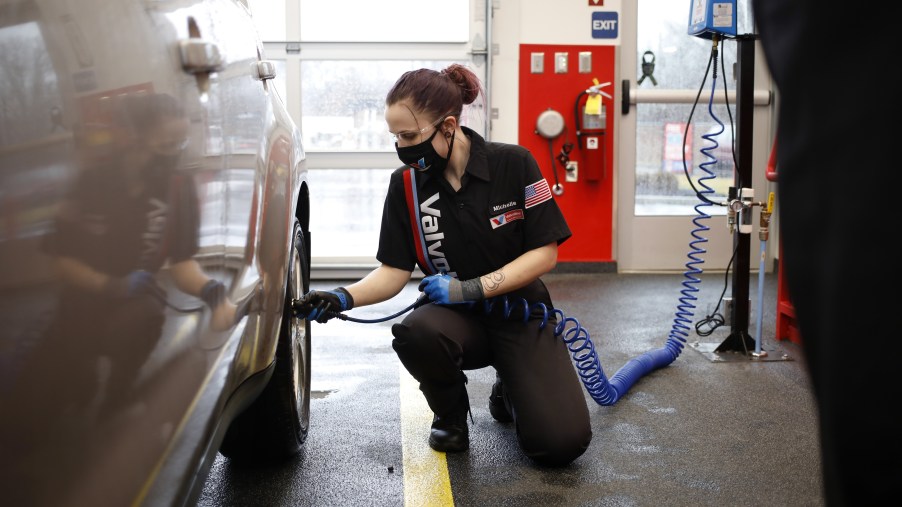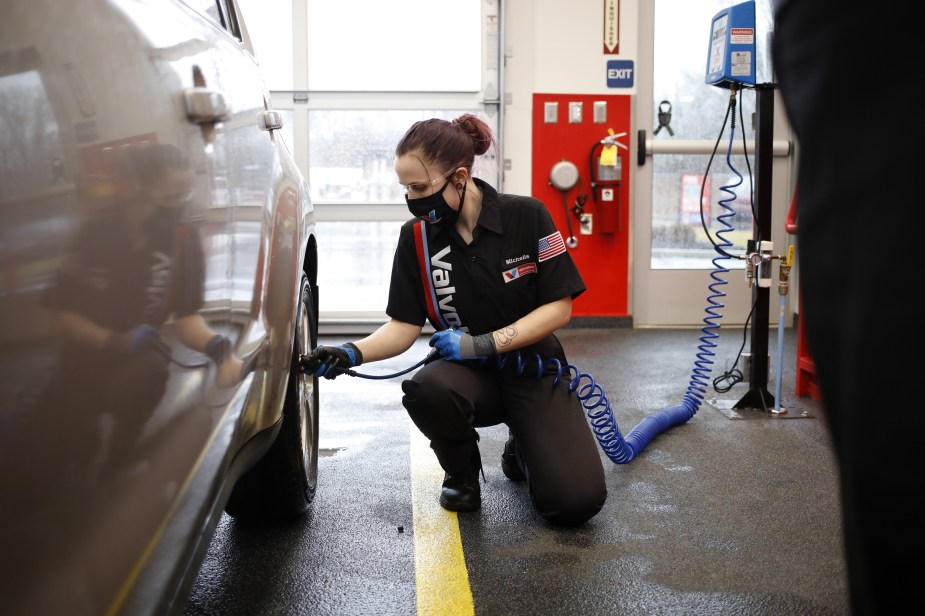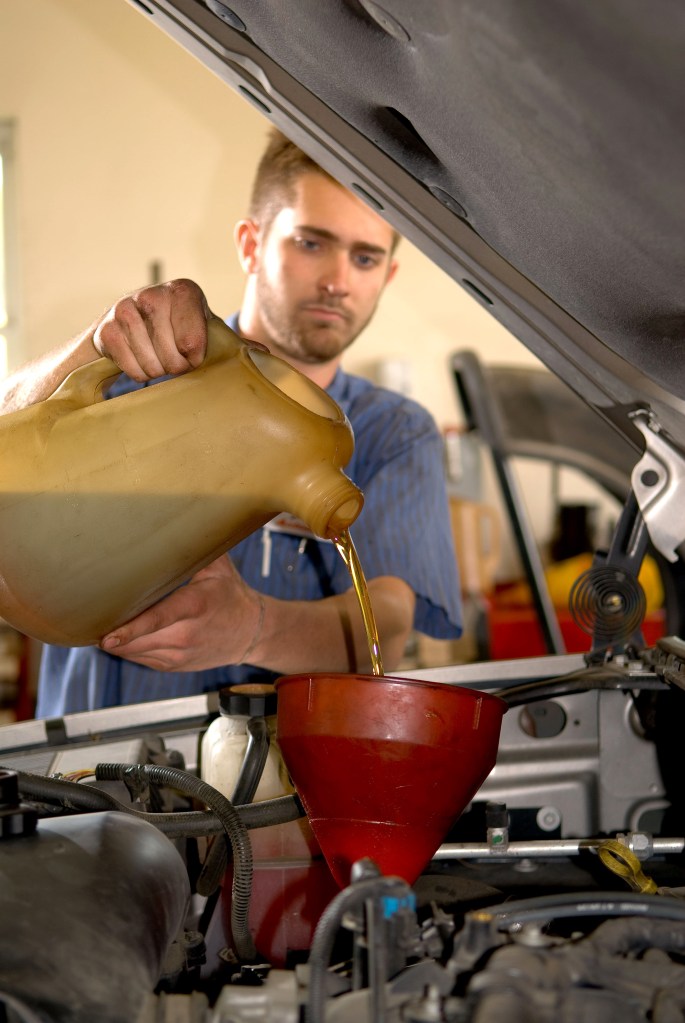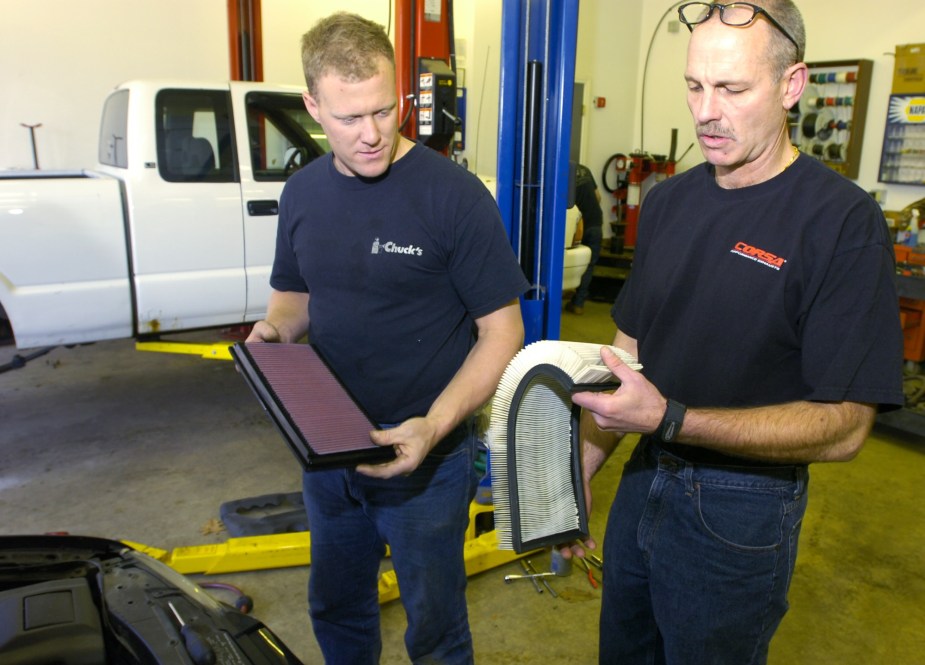
7 Car Maintenance Items That Can Improve Your Gas Mileage
Car maintenance tasks to improve your gas mileage article highlights:
- Boosting your car’s gas mileage can be as simple as maintaining the correct tire pressure, regularly changing the oil, and replacing dirty air filters
- Missed engine tune-ups, faulty O2 sensors, Check Engine Lights, and clogged EGR valves are some of the biggest car maintenance mistakes that rob your fuel economy
- Besides keeping the fuel injectors clean, you might want to take your car in for a carbon cleaning, especially if it’s a high-mileage one with direct injection
From changing how you drive to what you drive, there are plenty of strategies for bumping up your fuel economy. But before you modify your car or lifestyle to improve your gas mileage, ask yourself: is the maintenance done? Regular maintenance doesn’t just keep your car running longer, but also running efficiently for longer. And if you’re not doing some of the things listed below, you might be leaving some mpg on the table.
The simplest way to improve your gas mileage is to keep your tires inflated and aligned properly

For how important tire maintenance is—I mean, tires literally keep your car on the road—it’s neglected all too easily. But if safe handling isn’t enough of a motivator, what about poor fuel economy? According to the EPA and the U.S. Department of Energy, running on old, misshapen, and/or poorly-inflated tires can drop your gas mileage by 0.6% on average. And in some cases, it might drop by 3%.
Ideally, you should check your tire pressure at least once a month. And if your area experiences extreme temperatures or temperature swings, check it more frequently. Merely increasing your average tire pressure by 1-2 psi can improve your gas mileage by 0.2%, the EPA says. Plus, it extends your tires’ lifespans. And it only takes a few minutes.
In addition, even if you haven’t recently replaced your tires, make sure they’re properly aligned. A poor alignment doesn’t just affect safe handling—it can also make your engine work harder. And that means poor gas mileage. Fortunately, unless your car sustained some pothole damage or had some major suspension work, an alignment is usually a once-per-year maintenance item.
Changing your oil on time and with the right grade is another way car maintenance can improve your gas mileage

Speaking of simple car maintenance items to improve your gas mileage, let’s talk oil. Besides preventing engine wear and tear, following your car’s prescribed oil change interval also helps it run efficiently. But following the schedule is only half the battle.
In addition to changing your oil at the correct time/mileage, you also need to replace the old stuff with the correct new stuff. Using the wrong grade of oil can lower your gas mileage by 1-2%, the EPA and DoE say. Admittedly, some extreme circumstances do require an oil-grade swap. But if you’re in that situation, fuel efficiency isn’t a priority.
So, to save gas, change your oil on time and with the correct grade.
A clean air filter makes getting good gas mileage easier

This next car maintenance task doesn’t necessarily improve gas mileage on its own. However, it’s an important first step in improving your fuel economy and literally only takes a few minutes. And that task is changing your engine air filter.
In the carbureted past, clogged air filters genuinely cost cars several percentage points of fuel economy, the EPA and DoE claim. Today’s fuel-injected engines, though, can accommodate a dirty filter to some extent. However, driving with a dirty air filter does rob acceleration, which makes you work the engine harder to compensate. And that, indirectly, lowers your gas mileage.
Please note that you don’t have to replace your stock filter with a high-performance air filter. They can boost performance slightly, especially if you have a turbocharged car, but the efficiency gains are rarely huge. So, don’t feel bad about putting money towards other maintenance or fuel economy work.
The best way to boost your mpg is to give your engine a full tune-up
Recently, my parents’ old Honda Odyssey finally passed its emissions test after a few judicious repairs. But besides making it Illinois-road-legal, the repairs also had a neat benefit: better gas mileage. After a recent multi-state road trip, my dad says the van now burns roughly 30% less gas on the highway. That’s entirely because the repairs were mostly just long-delayed maintenance items. And the most basic of those tasks was an engine tune-up.
Technically, replacing the air filter is part of a modern engine tune-up, as is changing the oil and other fluids. But it also includes changing the spark plugs and ignition coils, which are what let the engine burn fuel in the first place. And along with the other tune-up tasks, replacing the plugs and coils can improve your gas mileage by 4% on average, the EPA and DoE say.
But while my parents’ Odyssey did get new spark plugs and ignition coils, they alone weren’t responsible for the gas mileage boost. That’s also thanks to the other tune-up and car maintenance items the mechanic addressed.
Not checking your O2 sensors or CELs is deferred car maintenance that seriously drops gas mileage
Diagnosing a Check Engine Light can be one of the most frustrating car maintenance tasks, especially if you lack an OBD2 scanner. But resolving the cause of a CEL is genuinely beneficial to your engine’s health. And some CELs, especially ones linked to your emissions controls, tank your gas mileage if they’re not addressed. That’s particularly true for faulty oxygen sensors.
The oxygen sensor, aka ‘O2 sensor,’ monitors the air-to-fuel ratio in the gases flowing into your catalytic converter. Without this information, your car can’t tell if its engine is running efficiently. And if the sensor breaks, it can cause anything from rough idling to misfires and, most importantly for our purposes, poor fuel economy.
A faulty O2 sensor can decrease your car’s gas mileage by up to 40%, the EPA and DoE report. Hence why, when my parents’ Odyssey got a new one, its fuel efficiency dramatically improved. So, if you’ve got any kind of CEL, especially one that’s sensor-related, get it fixed ASAP or you’ll be throwing money into the gas pump.
Cleaning or replacing your EGR valve can give your gas mileage a major boost
Your O2 sensor isn’t the only emissions-related part that can improve or tank your car’s gas mileage. So does the exhaust gas recirculation (EGR) valve, which, as its name suggests, regulates the flow of exhaust gases.
Normally, the EGR valve opens and closes to let some exhaust gases back into the combustion chamber to reduce smog and NOx production. But over time, soot and other grime can clog it. When that happens, your engine can start misfiring, idling roughly, and burning more fuel. And I can confirm that my parents’ Odyssey got a new EGR valve as part of its emissions repairs. Hence why its gas mileage got better after it got back from the shop.
Just like a faulty O2 sensor, EGR valve failures often throw up CELs, albeit with different trouble codes. Some auto parts stores can scan those codes for free or for a small fee if you want to repair the problem yourself. But if you do want to DIY this bit of car maintenance, you might want to get your own OBD2 scanner.
Make sure your fuel injectors and valves aren’t gunked up
I’ve been talking about the regular maintenance items my parents’ Odyssey got as part of its emissions fix, but it got some irregular work, too. Because it hadn’t been running properly for some time, the intake manifold needed to be cleaned out. And because that Odyssey has well over 200,000 miles on it, it needed some VTEC valvetrain work, too. However, while cleaning a car’s intake manifold is a rare occurrence, cleaning other things as part of regular maintenance can improve your gas mileage.
Firstly, consider adding some fuel injector cleaner to your gas tank, though not more frequently than you change your oil. You should look for a cleaner with polyether amine (PEA) additives, as they’re the strongest detergents available. And if your injectors are so clogged that you’re noticing misfires, idling issues, or other faults, you’ll need a full-on cleaning kit or new injectors, CarBibles says. That’s not something the average home mechanic should tackle. But clean fuel injectors are vital for good gas mileage.
Secondly, if your car has a lot of miles on it, especially if it has direct fuel injection, consider getting the engine carbon cleaned. Remember how soot builds up on the EGR valve? The same thing happens to your engine’s valves. And when that happens, they don’t work efficiently, which leads to poor gas mileage, among other issues. Hence why some manufacturers include carbon cleaning in their cars’ maintenance schedules, CarBibles notes. And if you really want to get all that gunk off, spring for walnut blasting, not just a spray-in cleaner.
Follow more updates from MotorBiscuit on our Facebook page.


